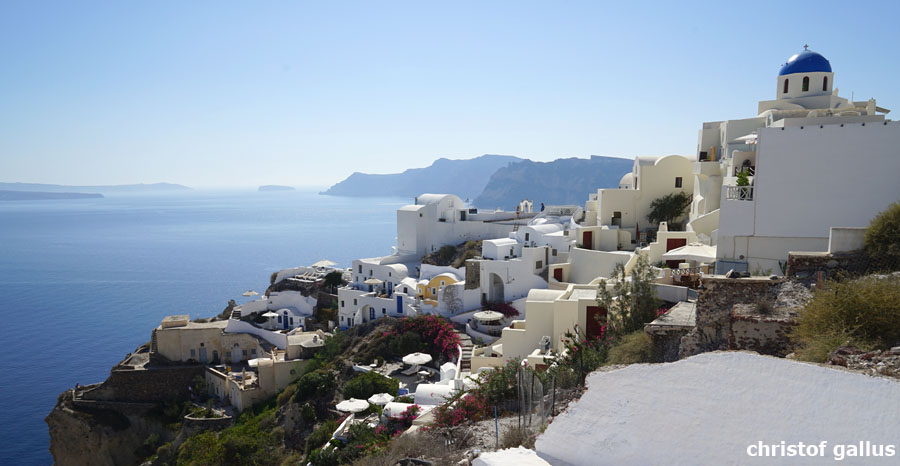
Santorini
The island of Santorini is the postcard motif of Greece. Houses painted white, surrounded by dark blue water and an endless sky attract millions of tourists from all over the world to Santorini every year. The picturesque villages of the main island are up on the slope edge, the former volcanic crater.
History of Santorini
Santorini was originally a round volcanic island. The volcano erupted around 1500 BC, the empty magma chamber imploded and a caldera (crater) formed. The rim of the caldera collapsed and water streamed into the crater. In 197 BC, a new crater, the Palaia Kameni, formed in the center. The new crater Nea Kameni was created from 1570 and is still active. An eruption in the next few years is considered likely as the crater is already bulging.
The water surface between the islands has a maximum extension of 10.5 kilometers.
How to get to Santorini
The fastest way to get to Santorini is by plane. The airport is about 4 km east of Fira. From Piraeus it takes between 4-11 hours by ship, depending on whether you take a fast or slow ferry. If there are several stopovers, the crossing can take a long time. The fast ferries are significantly more expensive. The ferries arrive at New Harbor Thira, which is about 4 kilometers south of Fira. M
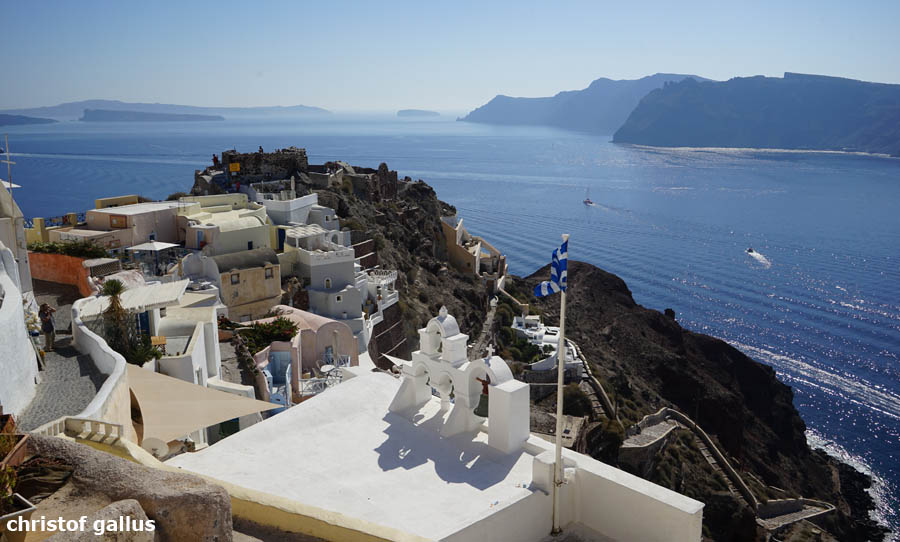
Thira
Thira is the main island of the archipelago. With an area of almost 80 km², it is larger than all the other islands of Santorini put together. On Thira there is a small airfield and the harbor. The steep coast of Thira rises around 570 m above sea level. The longest extension from north to south is 17 kilometers. Most of the approximately 15,000 inhabitants of the archipelago live on Thira. Most of the sights are also located here. M
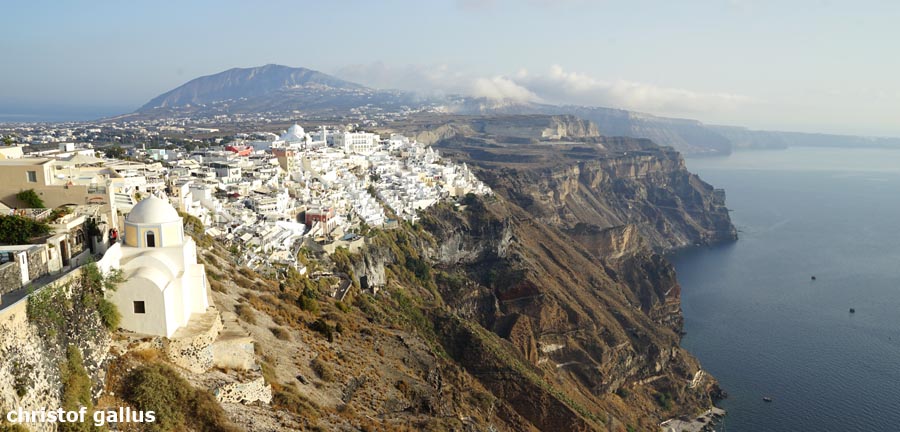
Fira
Fira is the largest place on Thira Island. The pier for the cruise ships is located here. A steep staircase leads to the top from the harbor. You can let donkeys carry you or you can take the cable car. Fira is roughly in the middle of the island, on the west side facing the caldera. The place is particularly beautiful because part of Fira was built in terraces along the slope. M
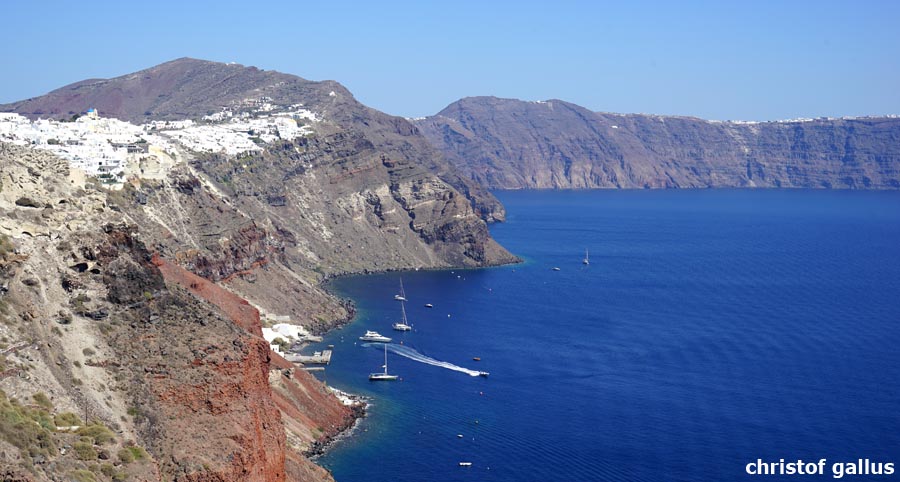
Santorini Caldera
Due to the steep caldera, Santorini has no real port. The depth of the sea in the crater is around 200-300, which means that anchoring here is also very difficult. Most boat berths are secured by moorings (ropes attached to the rock). The caldera of Santorini is also dangerous for large cruise ships, as the misfortune of the Sea Diamond shows. The ship drove against a reef that was not correctly recorded on the nautical chart and sank in 2007 off Thira. M
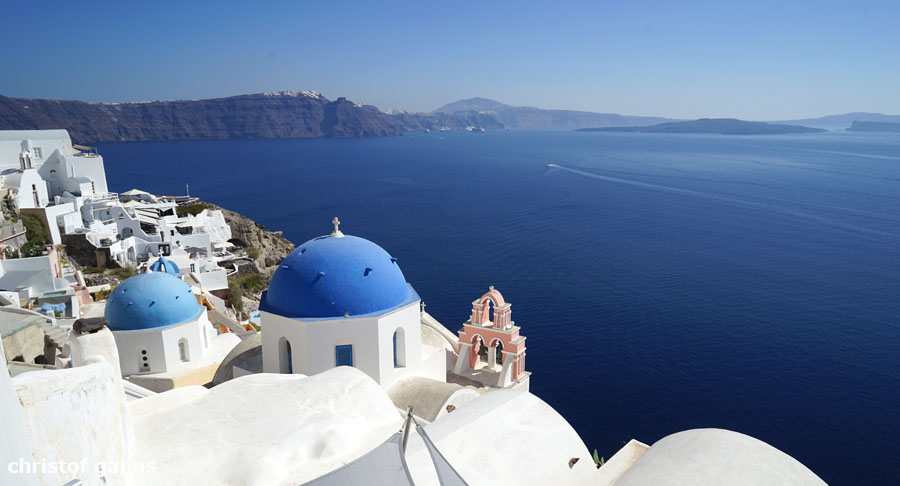
Oia
The most beautiful place on the island of Thira is Oia. Oia is located on the northwest corner of the island, from here you overlook the entrance to the caldera. On the photo you can see the island of Nea Kameni and on the left the place Fira. In Oia you can take the most beautiful photos. There are blue-domed churches, whitewashed houses, and windmills. M

Oia windmills
The Oia windmills are in the north of the city. From here you can already see the neighboring islands of Ios, Sikinos and Folegandros, which are less than 20 kilometers away. M
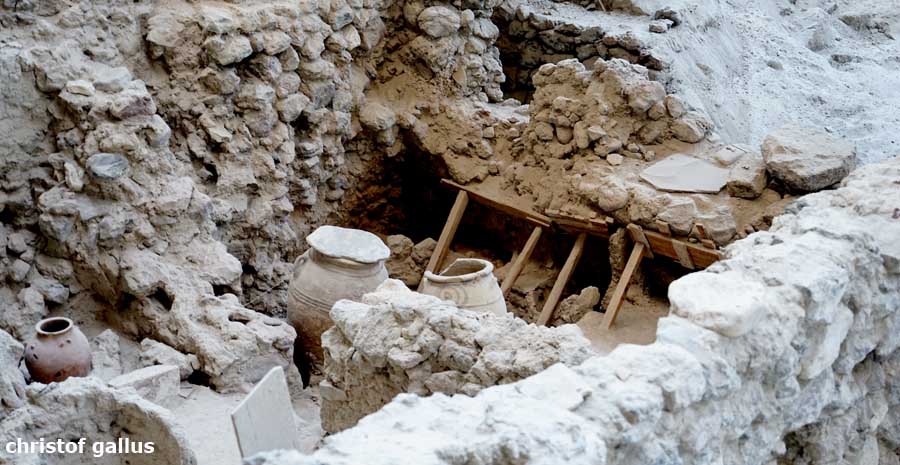
Akrotiri
The most important attraction of Santorini is the archaeological site of Akrotiri, in the south of the island of Thira. Here was a Bronze Age settlement of the Minoans, which was destroyed by a massive volcanic eruption around 1500 BC. Similar to Pompei and Herculaneum, the city was preserved by the ashes of the volcano and is very well preserved. Akrotiri has been settled since 5,000 BC, making it one of the first cities in Europe. The inhabitants of Akrotiri belonged to the Cycladic culture, which is closely linked to the Minoan culture on Crete. Knossos, the capital of the Minoans, is only 115 kilometers south of Santorini. Athens and Rhodes are over 200 kilometers away. Archaeologists estimate the population of the settlement to be around 2,000. Unlike in Pompei, no dead were found, the people had left the city before the eruption and took all valuables with them. However, it is not known whether they survived, as there is no evidence of any significant immigration to the surrounding islands during this period.
Many very well-preserved frescoes have been discovered in Akrotiri, which have been restored and shown in the National Museum in Athens. In the Archaeological Museum of Fira you can admire other frescoes and ceramics from Akrotiri.
The excavation site of Akrotiri is roofed and covered with earth in order to let as little heat as possible inside. Light and air enter the ruined city through skylights. M
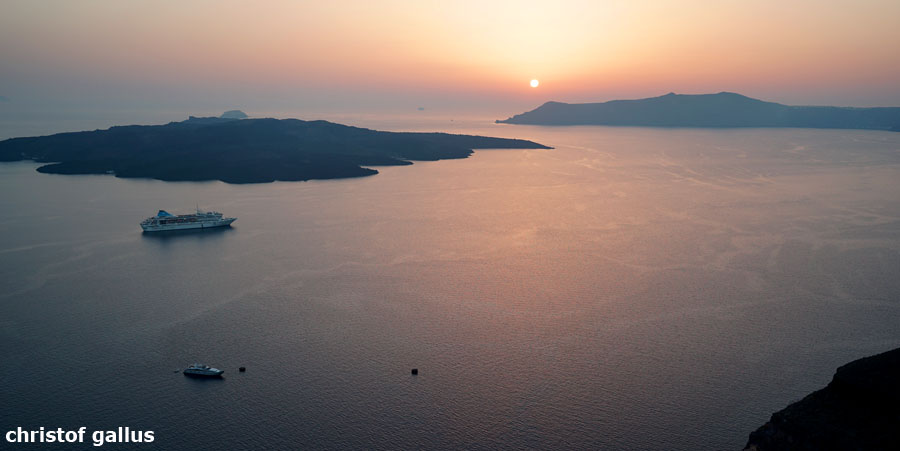
Santorini sunsets
Santorini is famous for its spectacular sunsets. Depending on where you watch the sun go down, you have different perspectives. On the photo you can see the view from Fira, where the sun sinks behind Oia. If you watch the sunset in Oia, the sun sinks into the sea behind the island of Sikinos. When the sky is cloudless, you always have a magnificent sunset through the high crater rim. M
Map of Santorini
ads
Travel Guide
ads
ads


